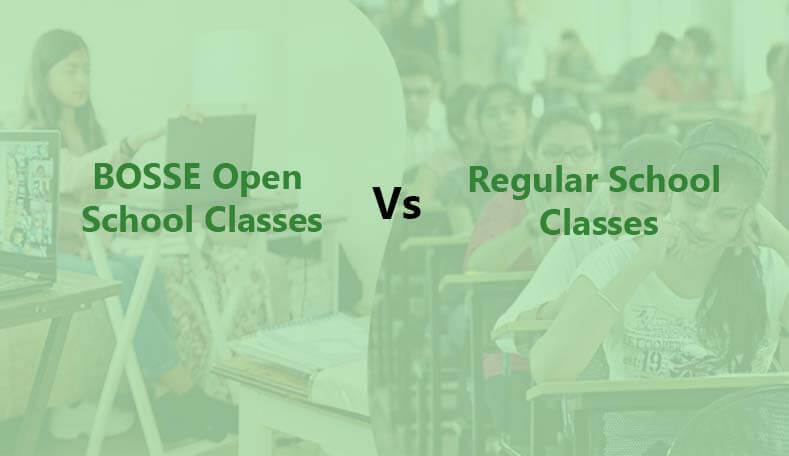India is often regarded as one of the world’s ancient countries, with a long history of cultural and literary endeavors. India’s educational history, according to experts, extends back over 5000 years. Currently, at the national level, there are three central boards in India namely CBSE, CISCE, and NIOS. CBSE and CISCE are regular school boards, whereas NIOS is an open school board. All three boards conduct board examinations for students in class 10th and 12th across India. Regular school boards require students to attend daily classes at schools, but an open school board is designed to assist students who are unable to pursue regular studies. In a nutshell, the main distinction between regular and open boards is that open boards allow much flexibility.
Significant Differences Between Open School and Regular school
- Open school boards such as NIOS, BOSSE, and others allow students to study from home or while working, whereas regular school requires students to attend classes every day.
- Regular schooling is structured around student-teacher interaction and adheres to a strict timetable. Open schooling, on the other hand, is a flexible educational strategy that allows students to self-learn while also assessing their progress under their timetable.
- Regular schooling is more focused on instruction and education services that are not particularly focused on special education or vocational education, whereas the open school is extremely beneficial to people who want to continue their studies while working in a gainful activity programme.
- Regular school students must adhere to strict attendance policies. Whereas open school students can complete their 10th and 12th grades through NIOS, BOSSE, or any other open board, and they are equally competent to pursue college degrees.
- Students in regular school are unable to pass exams unless they meet attendance criteria. Open school students, on the other hand, can complete their 10th and 12th grades through NIOS, BOSSE, or any other open board and are equally capable of pursuing college degrees.
- Open schools allow mentally handicapped, women, school dropouts, residents of rural and remote areas, 10th or 12th failed students can enroll and complete their school education from home, but regular schools do not allow pupils who are unable to attend school regularly.
Approaches of Open Schools
The open school board aims to deliver relevant, continuous, and developmental education to diverse groups of pupils through an Open Learning System at the secondary and senior secondary level, in response to the evaluated requirements of the people. As an alternative to the formal educational system, it contributes to:
- Universalization of education.
- More equality and justice in society.
- The evolution of a learning society.
Objectives of Open School
- To promote the notion of open schooling and to highlight its benefits to local, state, and national governments.
- To stress the significance of developing National Qualifications Frameworks and assessment systems that are tailored to the specific demands of open schools.
- Work to increase the popularity of this sort of education among potential participants across India.
- To encourage the creation of systems for the recognition of prior learning, as well as the collection and transfer of credits, that will allow open schoolers to freely transition into other types of education and training.
- To advocate and lobby for more open school practitioners to be involved in national education policy-making.
To sum up, regular schools and open schools differ in many aspects, the most important of which is flexibility. Open schools give much-needed educational help to dropouts who are hesitant to re-enter the formal system, as well as a bridge to mainstream education.
